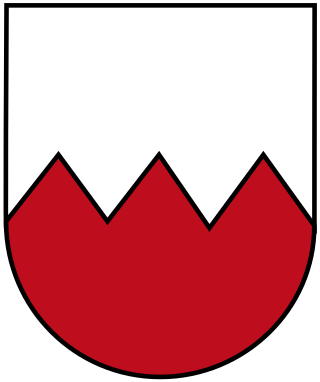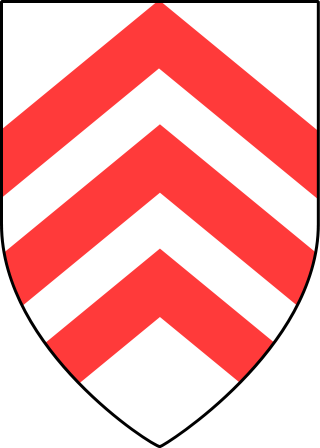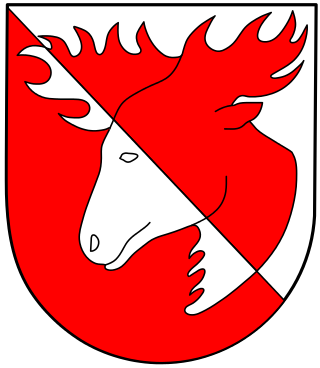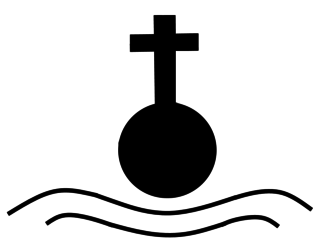
The German 73rd Infantry Division or in German 73. Infanterie-Division was a German military unit which served during World War II. The division consisted of more than 10,000 soldiers, primarily of the infantry branch, with supporting artillery. The division was only semi-motorized and relied on marching for the infantry units and horse-drawn transport for most of the support equipment, especially the artillery.

The 709th Static Infantry Division was a German Army infantry division in World War II. It was raised in May 1941 and used for occupation duties during the German occupation of France in World War II until the Allied invasion. It was on the Normandy coast when the invasion occurred and so fought in the Battle of Normandy. The division was trapped in the Cotentin Peninsula and destroyed in the defense of Cherbourg.

The German 5th Infantry Division was formed in October 1934 and mobilized on 25 August 1939. The division's troops were garrisoned in Konstanz, Ulm, and Freiburg. When formed, the division consisted of the 1st, 2nd, and 3rd battalions of the 14th, 56th, and 75th Infantry Regiments, the 1st, 2nd, and 3rd Battalions of the 5th Artillery Regiment, the 1st battalion of the 41st Artillery Regiment, and assorted 5th Division support units.

The 6th Infantry Division was a unit of the German Army during World War II.

The 26th Infantry Division was a pre-World War II German Infantry Division of the 1st mobilisation wave. It was mobilised for World War II on September 26, 1939, disbanded on September 10, 1944, near Radom and reformed as the 26th Volksgrenadier Division on September 17, 1944, near Poznań by absorption of the new 582nd Volksgrenadier Division of the 32nd mobilisation wave. Remnants of the Division entered U.S. captivity in the Harz region in 1945.

The 14th Panzer Division was an armoured division in the German Army during World War II. It was created in 1940 by the conversion of the 4th Infantry Division.

The 272nd Infantry Division was a Type 1944 Infantry division of the German Wehrmacht during World War II, that was originally formed in December 1943. The division fought in many of the major battles throughout Operation Overlord, culminating in the Retreat from Northern France and the Low Countries in late August/early September 1944.

The 45th Infantry Division was an infantry division of the army of Nazi Germany during World War II. Towards the end of the war, the division was reassembled into a second iteration, the 45th Volksgrenadier Division

The 11th Infantry Division was an infantry division of the Wehrmacht that was initially founded as a cover formation during the Reichswehr era. It was active from 1934 to 1945.

The 15th Infantry Division was an infantry division of the German Army during the interwar period and World War II, active from 1934 to 1945.

The 197th Infantry Division was a Wehrmacht division in World War II. It was activated on 1 December 1939.

The 214th Infantry Division was a German division in World War II. It was formed on 26 August 1939.

The 81st Infantry Division was an infantry division of the German Army during World War II. It was active from 1939 until 1945 and served primarily on the Eastern Front.

The 75th Infantry Division was a German infantry division in World War II. It was formed on 26 August 1939.
The 181st Infantry Division was a German division in World War II. It was formed on 1 December 1939. The division participated in anti-partisan operations in World War II in German-occupied Yugoslavia.
The 244th Infantry Division was an infantry division of the German army in World War II.
The 290th Infantry Division was a German infantry division in World War II. It was formed in the Munster Training Area in Wehrkreis X on 6 February 1940 and surrendered to Soviet forces at the end of the war as part of Army Group Courland.

The 376th Infantry Division was an infantry division of the German Army during World War II, active from 1942 to 1944 in two separate instances.
The 159th Infantry Division was an infantry division of the German Heer during World War II. The unit, at times designated Commander of Reserve Troops IX, 159th Division, Division No. 159, and 159th Reserve Division, was active between 1939 and 1945.
The 416th Infantry Division was a German infantry division of World War II.















